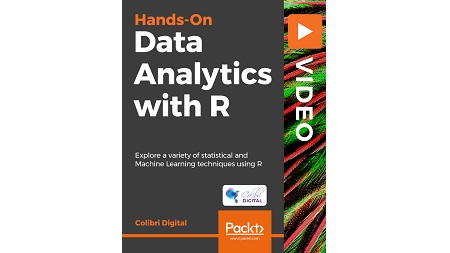
English | MP4 | AVC 1920×1080 | AAC 48KHz 2ch | 2h 15m | 546 MB
Analyze different datasets by reducing dimensionality, clustering, analyzing, and modeling. Be confident in your models, check their viability, and present them in an interesting and interactive manner
This course will expand your understanding of statistics so you can* create analytic models in R. High-level data science techniques will be presented to you in a practical manner, to help you bridge the gap between the questions you wish to answer, the data used for analysis, and how to create some of the classic models used in data analytics.
You will start off by understanding dimensionality reduction and data mining in R and learning how to simplify complex datasets and unearth patterns from data. Moving on, you will understand hypothesis testing and p-values. You will also demonstrate one-sample and two-sample tests and the benefits they provide as very sophisticated analytical techniques. You will understand how data can give you predictive insights into the future and will conclude by presenting data in a way that will allow you to answer questions with data-driven confidence.
By the end of the course, you will be capable of utilizing R’s statistical prowess to analyze a variety of datasets and present these insights effectively.
This course is designed to provide knowledge in those techniques most frequently used by covering the most commonly encountered areas of statistics and machine learning utilized in business and science today. Here, you will gain the skills necessary to analyze, predict, and present insights gathered by using these techniques in a practical setting.
What You Will Learn
- Utilize a variety of R’s machine learning and statistical techniques, interpret their outputs, and present these insights effectively and with confidence
- Use dimensionality reduction to overcome this issue without too many explanatory variables
- Mine data with common techniques such as hierarchical and K-means clustering
- Approach data using inferential statistics to implement effective hypothesis-testing techniques, providing strong evidence for a claim about your data
- Implement popular predictive analytic techniques that allow for the extraction of deep and hidden patterns within data
- Ensure that the models and techniques used are appropriate; checking a model’s effectiveness and reliability will make you confident in its predictive capabilities
- Discover neat and visually effective ways of presenting your findings and predictions
Resolve the captcha to access the links!